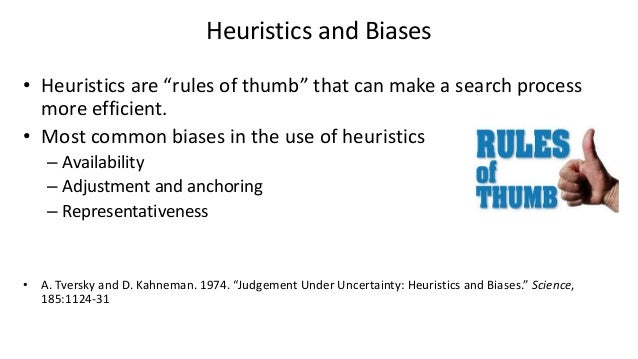
Regardless of how they were informed and whether they were informed correctly, all of the experimental groups reported higher estimates than the control group. A control group received no anchor and no explanation. In addition, they were explicitly informed that anchoring would "contaminate" their responses, and that they should do their best to correct for that. In a study exploring the causes and properties of anchoring, participants were exposed to an anchor and asked to guess how many physicians were listed in the local phone book. Other studies have tried to eliminate anchoring much more directly.

Clearly neither of these anchors can be correct, but when the two groups were asked to suggest when they thought he had died, they guessed significantly differently (average age of 50 vs. They were asked whether Mahatma Gandhi died before or after age 9, or before or after age 140.

For example, in one study students were given anchors that were obviously wrong. Various studies have shown that anchoring is very difficult to avoid. They were then asked to bid for these items, with the result that the audience members with higher two-digit numbers would submit bids that were between 60 percent and 120 percent higher than those with the lower social security numbers, which had become their anchor. The pattern has held in other experiments for a wide variety of different subjects of estimation.Īs a second example, in a study by Dan Ariely, an audience is first asked to write the last two digits of their social security number and consider whether they would pay this number of dollars for items whose value they did not know, such as wine, chocolate and computer equipment. Participants whose wheel stopped on 10 guessed lower values (25% on average) than participants whose wheel stopped at 65 (45% on average). Participants were then asked to guess the percentage of the United Nations that were African nations. (The correct answer is 40,320.) In another study by Tversky and Kahneman, participants observed a roulette wheel that was predetermined to stop on either 10 or 65. When these first multiplications gave a small answer – because the sequence started with small numbers – the median estimate was 512 when the sequence started with the larger numbers, the median estimate was 2,250.
#The anchoring heuristic full#
Because participants did not have enough time to calculate the full answer, they had to make an estimate after their first few multiplications.

In one of their first studies, participants were asked to compute, within 5 seconds, the product of the numbers one through eight, either as \displaystyle. The anchoring and adjustment heuristic was first theorized by Amos Tversky and Daniel Kahneman. in 1958 in their article "Assimilation and contrast effects of anchoring stimuli on judgments".ĭaniel Kahneman, one of the first researchers to study anchoring. This was applied to attitudes by Sherif et al.

When judging stimuli along a continuum, it was noticed that the first and last stimuli were used to compare the other stimuli (this is also referred to as "end anchoring". The original description of the anchoring effect came from psychophysics. Prices discussed in negotiations that are lower than the anchor may seem reasonable, perhaps even cheap to the buyer, even if said prices are still relatively higher than the actual market value of the car. For example, the initial price offered for a used car, set either before or at the start of negotiations, sets an arbitrary focal point for all following discussions. This bias occurs when interpreting future information using this anchor. Once the value of this anchor is set, all future negotiations, arguments, estimates, etc. Those objects near the anchor tend to be assimilated toward it and those further away tend to be displaced in the other direction. Anchoring occurs when, during decision making, an individual depends on an initial piece of information to make subsequent judgments. Anchoring or focalism is a cognitive bias where an individual depends too heavily on an initial piece of information offered (considered to be the "anchor") when making decisions.


 0 kommentar(er)
0 kommentar(er)
